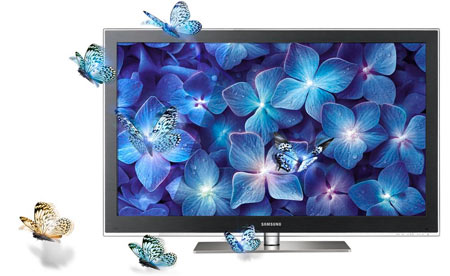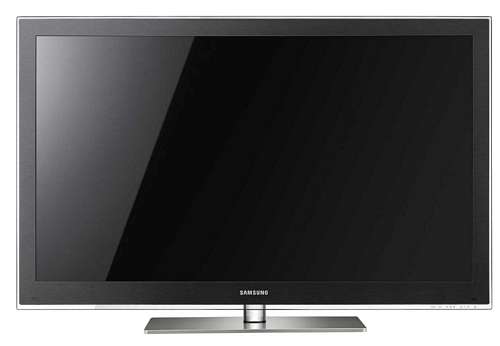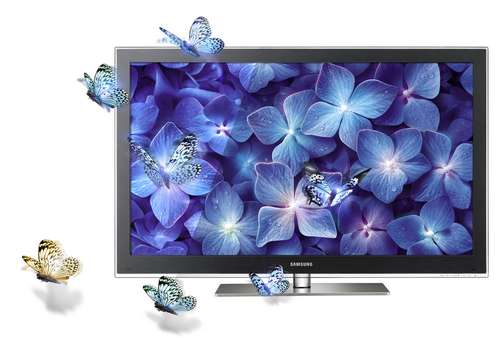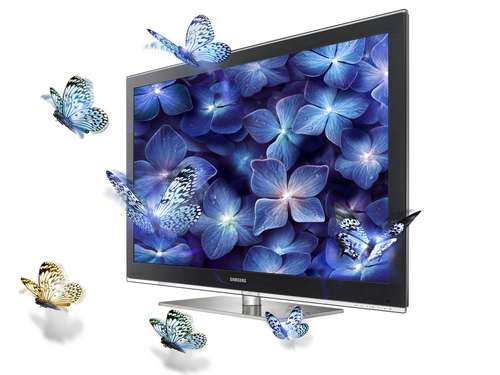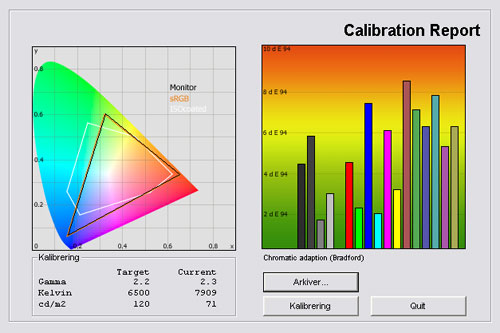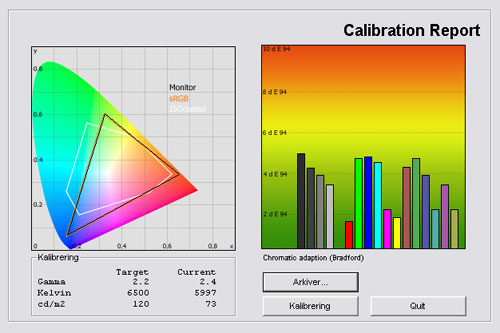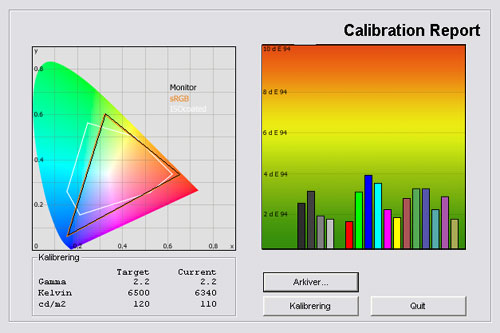Review: Samsung C8000 / C7000
Samsung C8000 / C7000 review
This year’s flagship plasma model from Samsung is called C8000 in the US and C7000 in Europe. It features a new 3D panel from Samsung, Samsung Apps, Real Black Filter, and a very slim design. It’s also the successor to the much acclaimed B850 from 2009.
But how good is Samsung’s new top range plasma TV compared to last year’s model? And compared to Panasonic and LG’s plasma TVs? What about the 3D picture quality? Read on to find out in this FlatpanelsHD review.
Samsung C8000 will be available in 50, 58, and 63 inches called PN50C8000, PN58C8000, and PN63C8000 in the US, and 50 and 63 inches called PS50C7000 and PS63C7000 in Europe.
Subscribe to our Newsletter to receive e-mails when new reviews are online. We’ll soon publish our Panasonic GT25, Panasonic D28, and Sharp LE925 reviews as well.
Panel size: 50" widescreen (plasma) Resolution: 1920x1080 Response time: - Contrast ratio: - Brightness: - Colours: 16,7 millions Signal processing: 8 bit for each colour Viewing angles (H/V): 178/178 Dot pitch: - Panel (Type): Plasma (Samsung) Wall mounting: Swivel stand: Dimensions (HxBxD): 74.9cm x 121.1cm x 3.cm (without stand) Weight 24,5 kg Built-in speakers: Inputs: 480p/i, 576p/i, 720p, 1080i & 1080p (50, 60 & 24p) Inputs • VGA • DVI (can be converted through HDMI)
• Audio (type) (Audio in/out)
• SCART (1 input)
• S-video • Composite • Component 
• HDMI (4 inputs, 1 HDMI 1.4)
• Other Outputs • Audio (type) (1 output)
• SCART • S/PDIF (optical)
Tuners • Analog • DVB-T • DVB-T (MPEG4) • DVB-C • DVB-C (MPEG4) • DVB-S • DVB-S (MPEG4) • Other Price and retailer:
| US retailer | UK retailer |
 |  |
Our first impressions
The TV has a very slim frame but looks pretty much similar to last year’s B850 model. The frame has a brushed titanium look but it’s still made from plastic.The stand is discreet and has a swivel function. It’s quite heavy and a solid foundation for the plasma TV that, on the other hand, is not very heavy compared to most 50-inch plasma TVs.
Inputs are located on the back and pointing either downward or to the side. This is a good move from Samsung because it enables you to wall mount the TV very close to the wall.
Below you can see the TV from the side, revealing the very slim frame (as slim as the “LED-TV” models).
Because of the many buzzing issues from the B850 model I also examined buzzing on C8000. I have to say that I did hear some very low buzzing – also from the front – but it was certainly not as bad as on some of the B850 models I have heard. My sample was not completely buzzing free. However, most of the time I didn’t hear it at all.
Test tools
Our TV signal is DVB-S (satellite) from Canal Digital and DVB-T (terrestrial). We also have an analogue TV connection. Testing is done with the DVE (digital video essentials) and Peter Finzel test DVD. Testing is also done with DVD, TV, Blu-Ray and Media center/PC.We use our own monitorTest. The software supports some of the traditional test patterns used to evaluate displays as well as some new and unique test patterns developed by the people here on FlatpanelsHD.
Sony PlayStation 3 is our Blu-Ray player.
All contrast measurements are based on the ANSI methodology.
Functionality
Below you can see the new Premium Remote form Samsung. The same remote is bundled with the high end C8000 Edge LED LCD-TV.It feels good in the hand and Samsung has added some weight to give a better feeling with the remote. In my opinion it’s much better than the previous remote controls from Samsung.
DLNA, Internet, Apps, USB recording (on the EU models) and multimedia functionality has also been integrated. The functionality is the same as on the other high-end Samsung models and therefore I won’t repeat this section.
Instead I suggest you read the Functionality section from our Samsung C8000 Edge LED review to learn more about the internet features, USB recording, Apps and DLNA.
Calibration settings
In the menus Samsung the following picture presets: Standard, Dynamic, Relax and Movie.
Samsung C8000 / C7000 also has these picture setting options: cell light, contrast, brightness, sharpness, colour, tint, and sharpness.
NB: Please note that the US variant has an advanced calibration menu (CAL-DAY and CAL-NIGHT). This menu is not available on the European model, and therefore it won’t be included in this review.
In the advanced menus you can adjust: Black tone, dynamic contrast, gamma, color space, white balance (RGB gain and offset), 10p White Balance, flesh tone, edge enhancement, xvYCC, digital noise filter, mpeg noise filter, HDMI black level, and motion judder canceller.
Samsung has also incorporated some Eco settings and a 3D menu.
Energy consumption
Below I have measured energy consumption on the 50-inch C8000 / C7000:| Out-of-Box | After calibration | |
| Standby | 0,2 W | 0,2 W |
| SD+HD | 210 W | 260 W |
| 3D | 330 W | 330 W |
After calibration I measured average energy consumption to 260 W. This is higher than the B850 but due to the 3D panel that has a higher light output. I was able to lower energy consumption be reducing the Cell Light setting but this also affected the picture.
I have also included a measurement of the 3D energy consumption. In the 3D mode the backlight is often maxed out to compensate for the reduction in light from the 3D glasses. Therefore the 3D mode also typically consumes more energy. On C8000 backlight was set to 20 in the 3D mode to ensure enough light for 3D viewing and here we found that the energy consumption rose to 330 W on average in a 3D game (Motorstorm 3D). So, 3D pictures definitely require more juice.
Also, please note that the flat panel TVs uses less power after calibration. This is common on flat panel displays because many picture parameters are reduced during calibration.
Calibration on C8000 / C7000
Below you can see an out-of-box measurement on Samsung C8000 / C7000 in the Standard picture settings without the Eco mode enabled.The graph says this:
The number on the left is the delta value. Delta is a difference between two factors; here it’s the difference between the measured color on the panel and the actual color that is our target.
The out-of-box picture is not impressive but typical for a Standard picture preset. Colors are generally over-saturated and some picture elements are boosted. Samsung has also added artificial sharpness to the picture that is not measured above and I’ll get back to this in the picture quality section.
Gamma is not very accurate and rises from 2.0 in the bright shades to 3.0 in the dark shades meaning that bright colors are too bright and dark colors too dark. Color temperature is also too high at 7909 Kelvin meaning that the picture has a blue push. This is true for 90 % of the out-of-box settings of flat panel TVs today.
I switched to the Movie setting and took a new measurement. Here’s my result.
I’m not really impressed but it’s a lot better. Still, we see some problems such as varying gamma and inaccurate colors. I would very much like to see Samsung incorporate a THX mode like on the Panasonic VT20 / VT25 and LG PK950 plasmas.
Afterwards I did a calibration on Samsung C8000 / C7000 but please note that I did not use the advanced calibration menu that is only available on the US models.
I managed to get a very decent result from Samsung’s high-end plasma TV and I’m pleased with this. These results are not very different when compared to the 2009 B850 model that this model is replacing, but that’s not a bad thing.
We now have much more accurate colors and an almost flat gamma curve on 2.2 that is also our target. Color temperature is also very close to our 6500 Kelvin target which ensures that the picture is neither to reddish or bluish.
Below are my calibrated settings.
| After calibration | |
| Profile: | Movie |
| Backlight | 16 |
| Contrast | 81 |
| Brightness | 52 |
| Sharpness | 0 |
| Color: | 50 |
| Tint: | G50/R50 |
| Black Tone: | Off |
| Dynamic Contrast | Off |
| Gamma | +1 |
| Color Space | Auto |
| Flesh Tone | 0 |
| Edge Enhancement | Off |
| xvYCC | Off |
| Color Tone | Warm2 |
| Size | Screen Fit |
| Digital Noise Filter | Off |
| MPEG Noise Filter | Off |
| HDMI Black Level | Low |
| Film mode | Off |
| Motion Judder Canceller | Off |
| Cinema Smooth | Off |
| • R-Offset: | 24 |
| • G-Offset: | 23 |
| • B-Offset: | 27 |
| • R-Gain: | 25 |
| • G-Gain: | 22 |
| • B-Gain: | 31 |
It’s very important that you use the Movie picture preset. I’ll explain why later in the picture quality section. I have increased the backlight setting to 16 and the gamma setting to get accurate gamma, and deactivated most dynamic circuits.
I have also calibrated the TV with the RGB gain and offset settings like you can see in the table above.
Picture quality on C8000 / C7000
In this section I go through picture quality with the calibrated settings.Samsung C8000 / C7000 has some reflections in the front because of the plasma panel. I have taken a picture below to illustrate this. The picture is taken on a sunny day.
During the day I tried to watch some different content and the panel definitely reflects light but C8000 also manages to keep intensity and depth in the picture. I talked about this in the B850 review- and in some of the Panasonic plasma reviews - and an important development in plasma TVs is the new layer construction that greatly reduces in-panel reflections. This also ensures better picture quality, even in bright living rooms.
Color reproduction is good. Samsung has some issues with reproducing some of the semi-dark colors and not all colors are perfectly distinguished on the panel due to the dithering method but the result is convincing. I did see some dithering, also from a distance, but it’s similar to what most plasma TVs today suffer from.
The SD picture quality is very good. I really enjoyed watching TV in standard definition on the TV because of the very good picture characteristics and quite good de-interlacing and scaling. This contributed to a detailed picture.
HD is also great. The picture quality is impressive and C8000 manages to provide a picture with depth and detailing - even in fast paced action scenes. I don’t see a giant improvement over the B850 model but that’s not a bad thing because this model also did very well in terms of HD picture quality.
1080p24 is supported correctly without judder. You just need to deactivate some of the picture circuits from the picture setup menu such as the Cinema Smooth.
Response time on the Samsung plasma is fast as we know it from most plasma TVs. We saw very low blurring and trailing on fast motion and the motion resolution is high even for fast paced content.
Phosphor trailing is also very low. It’s not eliminated but it’s better than on previous Samsung plasma TVs. The phosphor trailing occurs because of the phosphor layer that plasma TV utilizes and on C8000 / C7000 I saw some yellow and blue phosphor trailing meaning that it’s different for the illumination and de-illumination of the phosphor.
I rarely noticed phosphor trailing in practice but I did manage to provoke it in stress tests. All in all Samsung’s plasma TV is very fast and very close to the Panasonic VT20 / VT25, too. Cool.
I measured input lag to 15-20 ms in the game mode. This is a low value that makes Samsung C8000 / C7000 suitable for fast paced console gaming. In the non-Game Mode presets input lag is significantly higher, however.
I also examined image retention and I have to say that retention can occur. I saw it more than once and I also think that C8000 / C7000 has a tendency to create a bit more image retention than the B850 from the 2009 line-up but it’s not critical. This is probably caused by the 3D panel the outputs more light and we saw the same thing on the Panasonic VT20 / VT25.
It’s gone shortly after and I definitely saw much less retention after my break-in period. Some reports say that the 63 inch version has less image retention but I wasn’t able to confirm this because I only had the 50 inch model on the test bench.
Like other Samsung plasma TVs this one also has some minor line bleeding.
Below I have measured black level and contrast.
| Out-of-Box | After calibration | |
| Black level | 0,18 cd/m2 | 0,06 cd/m2 |
| Brightness | 71 cd/m2 | 110 cd/m2 |
| Contrast ratio | 394:1 | 1833:1 |
Contrast ratio +/- 50
After calibration I measured a black level of 0.06 cd/m2. Before calibration I measured a black level of 0.18 cd/m2. Let me include some words to this strange result that is very uncommon on Plasma-TVs because they tend to have almost identical black level before and after calibration.
On this TV I saw very different black level values before and after calibration so I dug deeper to examine why this was happening. I found that the TV has far worse black level reproduction in the Standard picture mode. When you switch to the Movie mode black reproduction is improved considerably.
I also tested on different signals such as 24 Hz, 50 Hz and 60 Hz and found another strange thing here. With a 60 Hz signal I got deeper black levels than with a 50 Hz signal. This obviously have something to do with the driving method and sub-pixel refresh but it’s not supposed to do this.
However, the biggest change in black levels still occurred when switching between the Standard and Movie mode. On the Standard picture preset I measured 0.18 cd/m2 black with a 60 Hz signal. The black level was improved drastically when I switched to the Movie mode.
After I selected the Movie picture mode I measured 0.06 cd/m2 (with 60 Hz) which is not as low as last year’s B850 (that had 0.05 cd/m2) but probably what we have to settle with on the new 3D panel that is brighter and a bit different. This is a compromise from Samsung in the process of chasing that 3D picture quality. We can live with it but we also have to say that Panasonic is now in front again when it comes to black levels with their VT20 / VT25.
You have to be sure to select the movie preset, however. Also, don’t activate the Cinema Smooth option during Blu-ray playback as this will do the same thing. If you’re a European you have a 50 Hz TV-signal coming in. With a 50 Hz input on the Samsung TV the black level is not as low as with a 60 Hz or 24 Hz (Blu-ray) input. This is a potential problem but again; the most significant change was between the Movie and Standard preset so I don’t regard this as a critical problem. Just stay on the movie preset.
Some reports suggest that the 63 inch version has deeper black levels. Again, I wasn’t able to confirm this because I only had the 50 inch version. All this might also be different on the US version (we have the EU version) but just stay on the Movie preset to be sure.
Shadow detailing before calibration was not very good, primarily caused by the wrong gamma that crushed most of the darker details in the picture. After calibration I managed to get quite good shadow detailing and only the 1-2 darkest grey tones are reproduced as black. This also means that you get good detailing in dark movies and games.
I also examined the Samsung C8000 in a completely dark room to see if it has clouding, backlight bleeding or floating black issues. Samsung has no problems with light uniformity or floating blacks.
3D picture quality on Samsung C8000 / C7000
We used the PlayStation 3 and a 3D Blu-ray player to test 3D movies and 3D games.Below you can see the 3D glasses. These glasses are different from those that were bundled with the C8000 Edge LED LCD-TV that we previously tested. You can still use both of the 3D glasses on all of Samsung’s 3D plasmas and LCDs, however.
When you tilt your head on this 3D plasma the picture remains stable. On the LCD/LED 3D models from Samsung the picture gets darker.
I won’t say too much about 3D in general and what you should expect but instead refer to our Panasonic VT25 / VT20 review for a general 3D introduction.
In this test I want to examine 3D depth, 3D picture quality, 3D crosstalk and finally include a small comparison to some of the other 3DTVs on the market.
The first thing I noticed was that Samsung C8000 / C7000 can output much more light from the panel than previous Samsung plasma TVs. Samsung has managed to allow more light with the new 3D panel and this is important because the 3D glasses reduce light when activated.
So, what about 3D crosstalk? Crosstalk has proven to be the most important factor when examining 3DTVs because it can reduce the 3D picture quality considerably like we saw on the Samsung C8000 LED and LG LX9500. We saw some good results on other 3D plasma TVs such as the Panasonic VT20 / VT25 and therefore I hoped to see the same good results from this Samsung plasma TV.
And Samsung didn’t let me down. The C8000 has no serious crosstalk issues in the 3D mode and the 3D picture quality and 3D depth is much better than on Samsung’s LCD/LED 3D models. C8000 is also very close to our 3D picture quality reference Panasonic VT20 / VT25 but I feel that Samsung’s plasma TV has marginally more crosstalk than Panasonic.
It might just be my memory - and I didn’t get the opportunity to do a side-by-side comparison - but nevertheless, both TVs have very low crosstalk and I think that most people will never notice it. This gives us very good 3D depth and 3D picture quality from Samsung’s C8000.
I also felt that Samsung C8000 can provide more light form the panel compared to Panasonic’s 3D plasma, which is important for 3D viewing during daytime. On the negative list I have to say that Samsung has more dithering noise when 3D is enabled. The noise is more noticeable in the 3D mode compared to the 2D mode but you have to sit close to the panel to see it.
In the 3D mode the TV is switched to the Standard picture mode. You can adjust most of the same parameters that are available in the 2D mode but the color accuracy was not very accurate. Unfortunately the 3D glasses have a minor tint that also skews colors.
All in all Samsung C8000 / C7000 gave my pretty good 3D picture quality and the 3D picture is definitely better than on Samsung’s LED/LCD 3D models. C8000 has minimal crosstalk and good 3D depth, and the result was close to that of the Panasonic VT20 / VT25
PC and Media Center
The TV supports 1:1 pixel mapping. In order to achieve 1:1 pixel mapping you need to select the aspect ratio called “Screen Fit” in the OSD.Viewing angles
A positive thing - that we also saw on the 2009 B850 plasma model - is that Samsung has eliminated the in-panel reflections because the glass layers are arranged differently. This also improves daytime viewing and reduces reflections in the panel.The viewing angles on Samsung C8000 / C7000 are fairly good but I did spot one strange thing. From the sides the viewing angles are very wide and color intensity remains stable. However, from the top the picture gets much darker and most dark colors are reproduced as black.
This is not really a problem because you don’t often look at the TV from the top but I have never seen this result from a plasma TV before and I guess this is one of the results of the different panel construction and higher light output from the Samsung 3D panel.
Below you can see the viewing angles.
Sound quality
The TV is very flat (as thin as Samsung’s Edge LED models) and the cabinet has no real room for proper speakers.The sound might have improved a bit compared to the B850 but it’s not convincing. The speakers are also hidden and the sound is very flat and without bass. Voices are clear, however, and you can use the equalizer in the sound menu.
I recommend a separate sound system.
Conclusion
Samsung’s first 3D plasma TV has a lot of media functionality and we have also come to expect this from Samsung in the recent years. It incorporates Internet Apps, the best DLNA from any TV manufacturer, USB recording (on the EU model) and many calibration setting options. We did hear some very low buzzing but in practical use I never found it irritating.Picture quality is in the elite of flat panel TVs today. The B850 from 2009 convinced us and C8000 (in the US) / C7000 (in EU) build on that foundation. I don’t see it as a major improvement compared to B850 but that’s not a bad thing because it puts it in the top of the picture quality scale today.
We saw very good picture characteristics such as accurate colors, low response time and low phosphor trailing. The picture is very detailed and HD picture quality is just beautiful. However, black reproduction is slightly higher than on the B850 and you have to use the Movie preset to get decent black levels. Also, retention has not yet been eliminated on C8000 / C7000.
The 3D picture quality is very good and very close to that of Panasonic VT20 / VT25. We saw only very little crosstalk, the 3D depth is good and the overall 3D picture quality is much better than on Samsung’s LCD/LED 3D models such as the C8000 LED model. The colors in the 3D mode are not very accurate but this is true for all 3DTVs at the moment. The new panel can also output enough light for decent 3D viewing during the day.
Samsung has once again released a very interesting plasma-TV and it’s definitely competing with some of the flagship models, and is an alternative to the highly praised Panasonic plasma-TVs. The very slim design, impressive picture quality and 3D picture quality at a very attractive price, makes C7000 (in EU) / C8000 (US) extremely tempting.
Price and retailer:
| US retailer | UK retailer |
 |  |
Subscribe to our Newsletter to receive e-mails when new reviews are online. We’ll soon publish our Sharp LE925, Panasonic GT25, and Panasonic D28 reviews as well.
| Pros | Cons | Target group |
| Picture quality | Black level could be better | Living room |
| 3D picture quality | Retention | Home Cinema |
| Media functionality | Out-of-box settings | |
| Inputs pointing down or to the side | ||
| Low response time and low phosphor trailing | ||
| Price |

